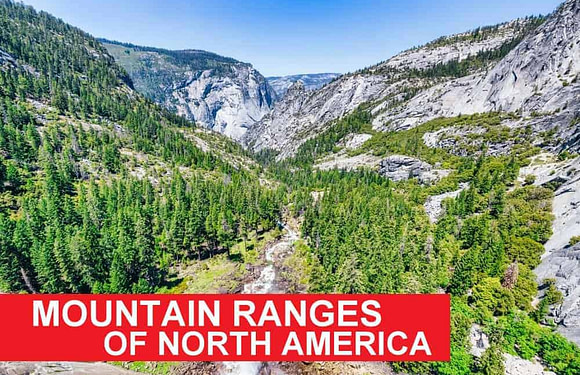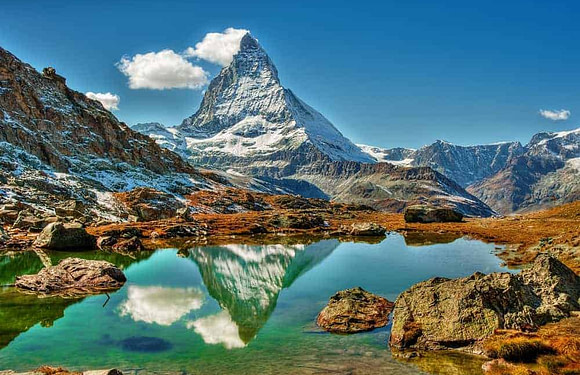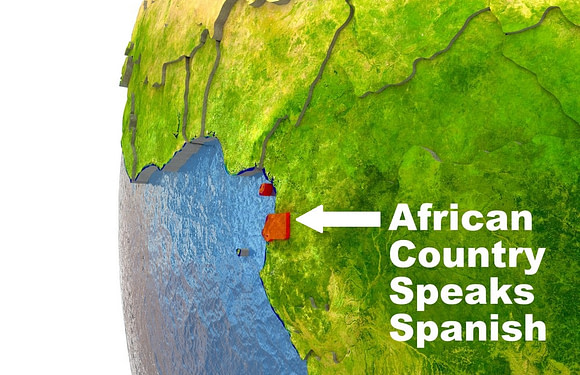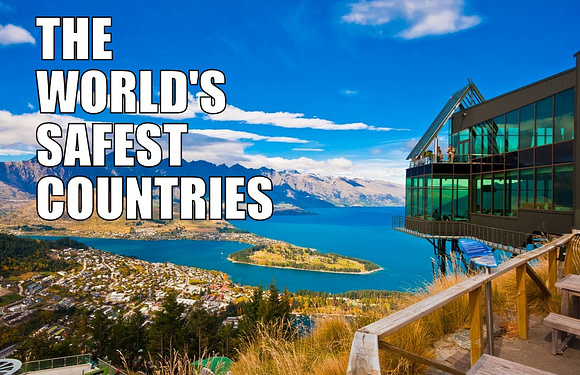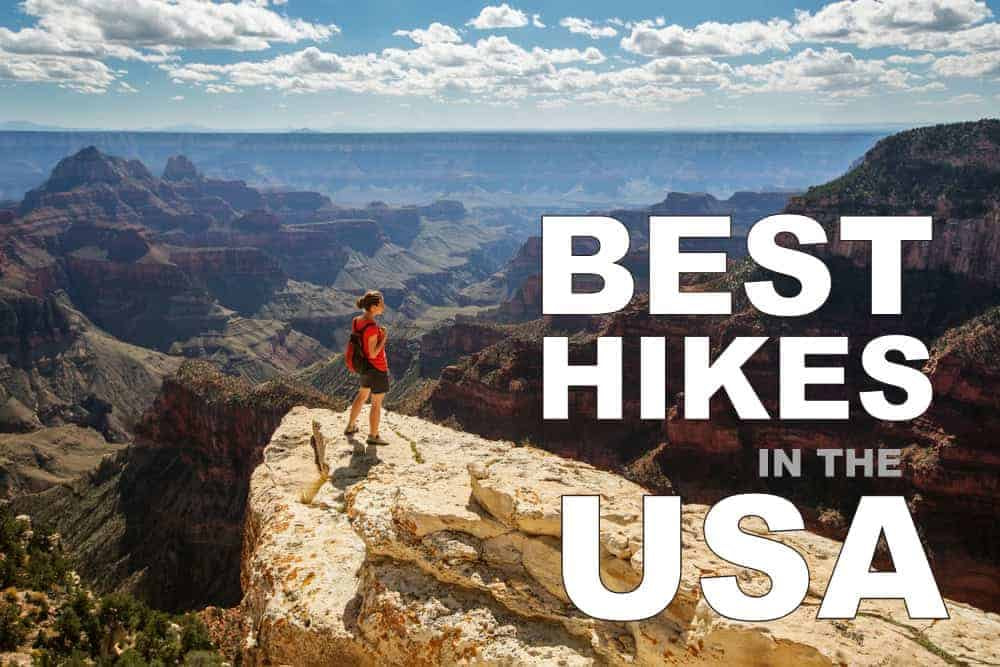
When it comes to hiking, the United States is special in that it contains an incredibly diverse range of natural environments across its 50 states. Hikers can experience desert landscapes, alpine environments, deciduous forests, and tropical areas, all within the same country.
Due to its vast geographical spread and varied climates, the USA offers year-round hiking opportunities. Additionally, the country is home to an extensive network of trails that cater to all levels of hikers, from novice walkers to experienced backpackers. The United States has a long history of land conservation and public parks, so many natural areas are preserved and maintained for public enjoyment. These factors make the USA a top tier destination for hikers around the world.
Here is our list for the 25 best hikes in the United States.
The 25 Best Hikes in the USA
1. Appalachian Trail, Eastern USA
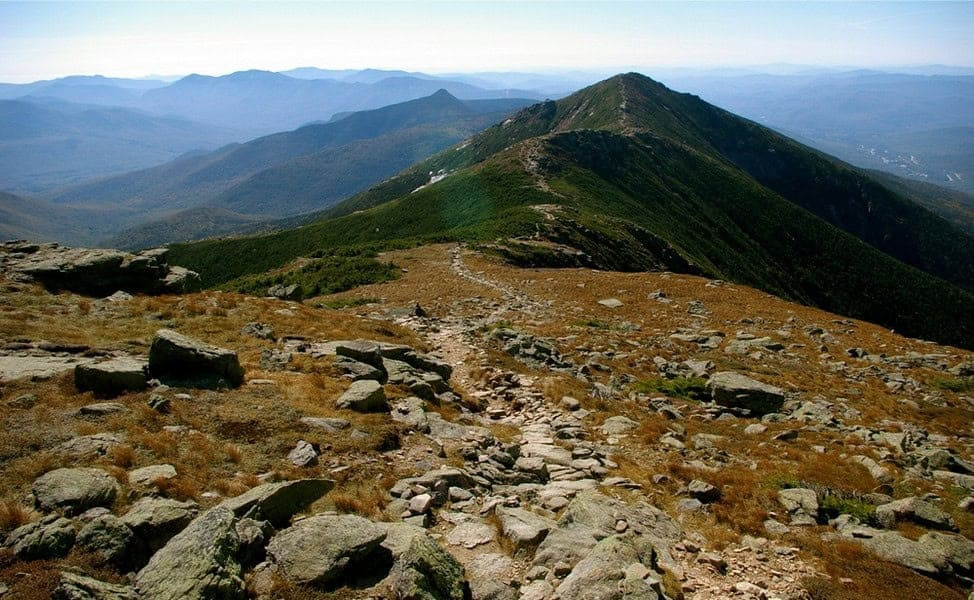
The Appalachian Trail is the longest hiking-only footpath in the world, stretching approximately 2,190 miles (3,524 kilometers). The hike travels through 14 states from Georgia to Maine. This extensive trail is legendary among long-distance hikers, requiring 5 to 7 months to hike the entire route. However, it also offers numerous shorter segments for less ambitious treks. The trail’s well-established network of shelters enhances its accessibility, making it a bucket list hiking destination for serious hikers.
2. Pacific Crest Trail, West Coast
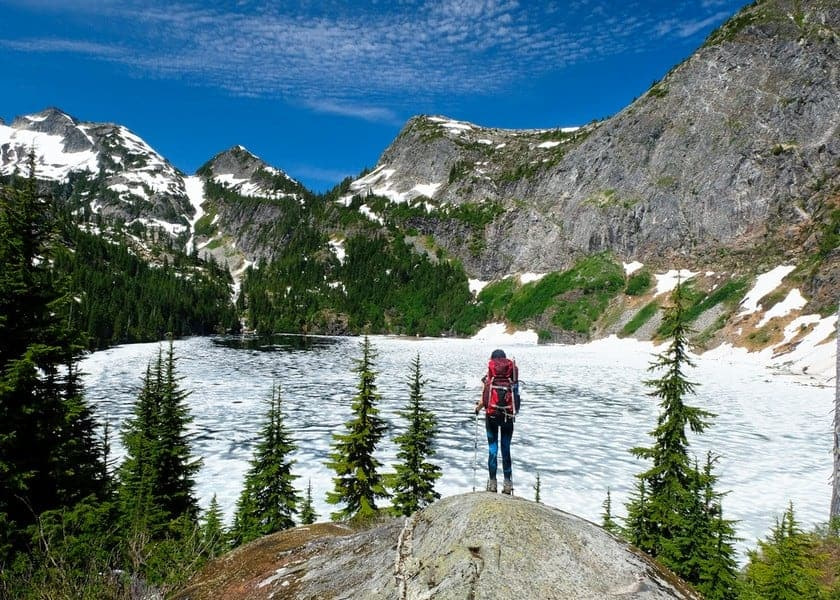
The Pacific Crest Trail is the sister hike to the Appalachian Trail. Running from the Mexican border through California, Oregon, and Washington to Canada, the PCT covers 2,650 miles (4,265 kilometers) of diverse ecosystems. This trail challenges hikers with desert landscapes, forested paths, and high mountain passes, providing stunning views and a rigorous hiking experience. The PCT is celebrated for its scenic beauty and the solitude it offers, making it a lifetime goal for many. The hike generally takes about 5 months to complete.
3. Continental Divide Trail, Rocky Mountains

The Continental Divide Trail (CDT) is a monumental long-distance hiking trail that stretches approximately 3,100 miles (4,989 kilometers) across the United States. This trail traverses the Continental Divide of the Americas, following the Rocky Mountains from the Canadian border in Montana to the Mexican border in New Mexico. The CDT is one of the country’s three Triple Crown trails, along with the Appalachian Trail and the Pacific Crest Trail, but is less traveled than its counterparts. The trail crosses five states—Montana, Idaho, Wyoming, Colorado, and New Mexico—offering a diversity of landscapes from alpine tundra and expansive forests to rugged desert and meadows. It generally takes 4-5 months to hike the trail.
4. The Wave, Utah/Arizona
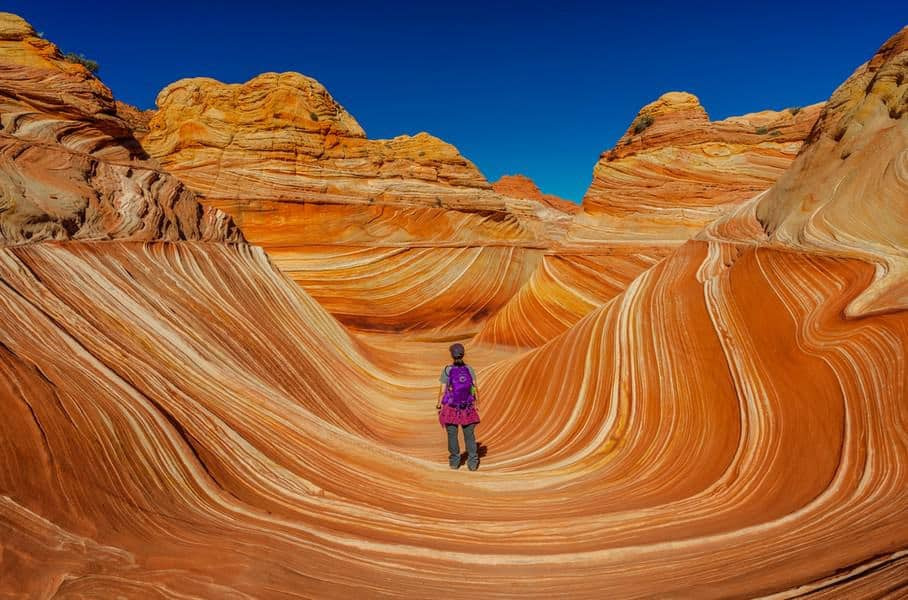
The Wave is a remarkable geological feature located in the Paria Canyon-Vermilion Cliffs Wilderness, on the border between Utah and Arizona. Known for its undulating forms and vibrant color palette, The Wave is composed of Jurassic-age Navajo sandstone that has been eroded into a series of beautiful troughs. The formations appear almost fluid, with striations of red, pink, orange, and yellow sandstone creating surreal and photogenic landscapes. The hike to The Wave is a relatively short but challenging trek, covering approximately 6 miles (9.7 kilometers) round trip.
5. John Muir Trail, California
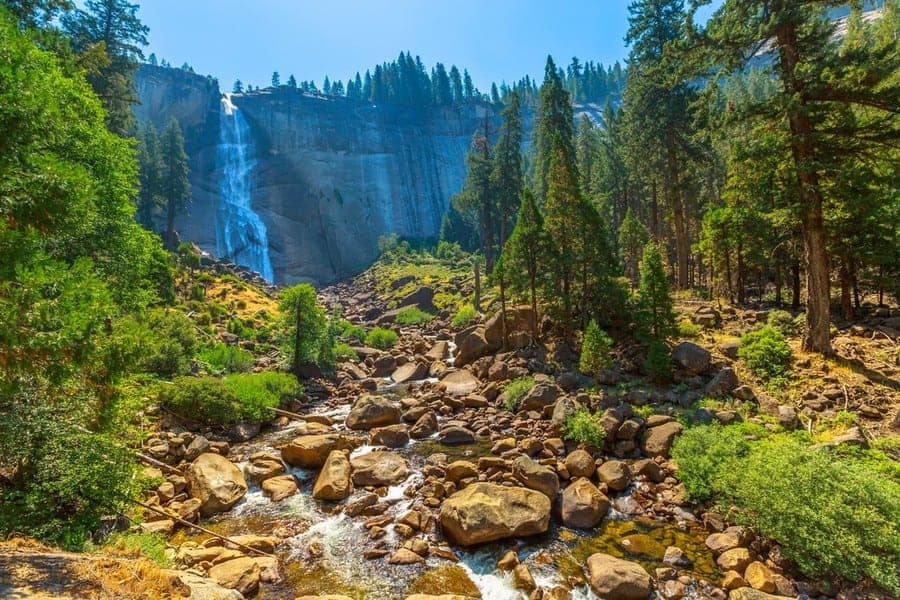
The John Muir Trail is one of the premier hiking trails in the United States, renowned for its breathtaking scenery and rigorous backcountry trails. Extending approximately 211 miles (340 kilometers) through California’s Sierra Nevada mountain range, it starts from Yosemite Valley, traverses the Ansel Adams Wilderness, Sequoia National Park, and King’s Canyon National Park, and culminates at Mount Whitney, the highest peak in the contiguous United States at 14,505 feet (4,421 meters). This trail epitomizes the high sierra, a term synonymous with massive granite peaks, serene alpine meadows, and pristine lakes. The typical duration is three weeks.
6. Teton Crest Trail, Wyoming
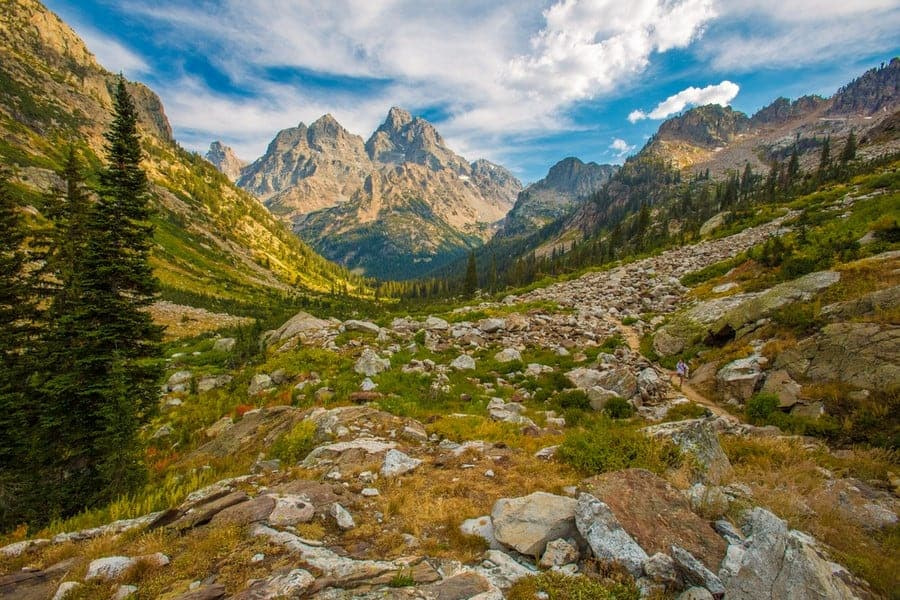
Located in Grand Teton National Park, the Teton Crest Trail is roughly 40 miles (64 kilometers) and famed for its dramatic views of the Teton Range and the surrounding valleys. French fur trappers called the range Les Trois Tetons, meaning “the three breasts”. The tallest of the three mountains was named Grand Teton, which literally means “the big breast”. This trail is moderately challenging and takes 4-6 days to complete.
7. Half Dome Hike, California
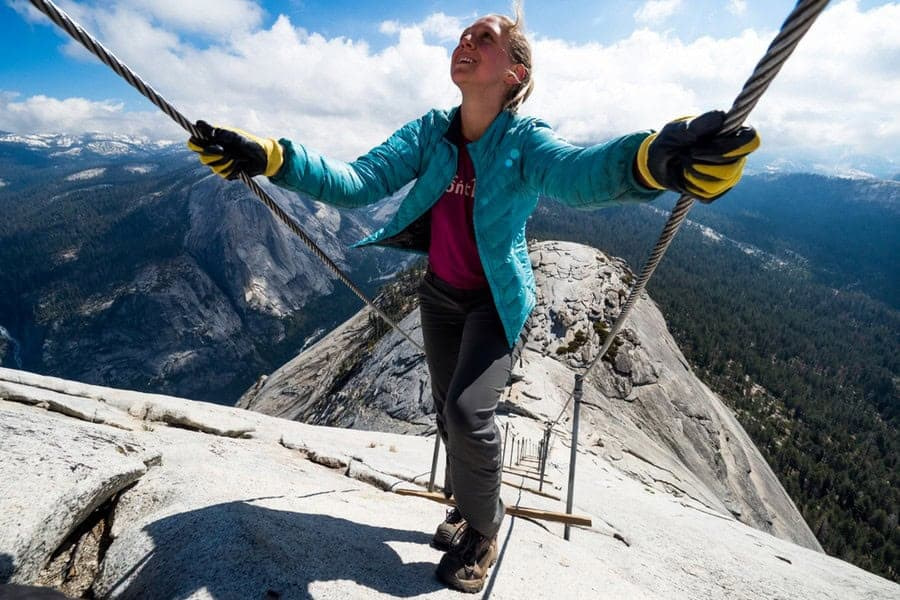
The Half Dome Hike in Yosemite National Park is one of the most iconic and challenging day hikes in the United States. Located in the heart of California’s Sierra Nevada mountains, this strenuous trek covers a round trip of approximately 14 to 16 miles (22.5 to 25.7 kilometers), culminating in the ascent of Half Dome itself. This final section involves a steep and exposed climb up the dome’s shoulder, using metal cables and wooden planks to assist hikers—this part is not for the faint-hearted and requires good physical condition, as well as gloves and proper footwear for safety.
8. Navajo Loop Trail, Utah
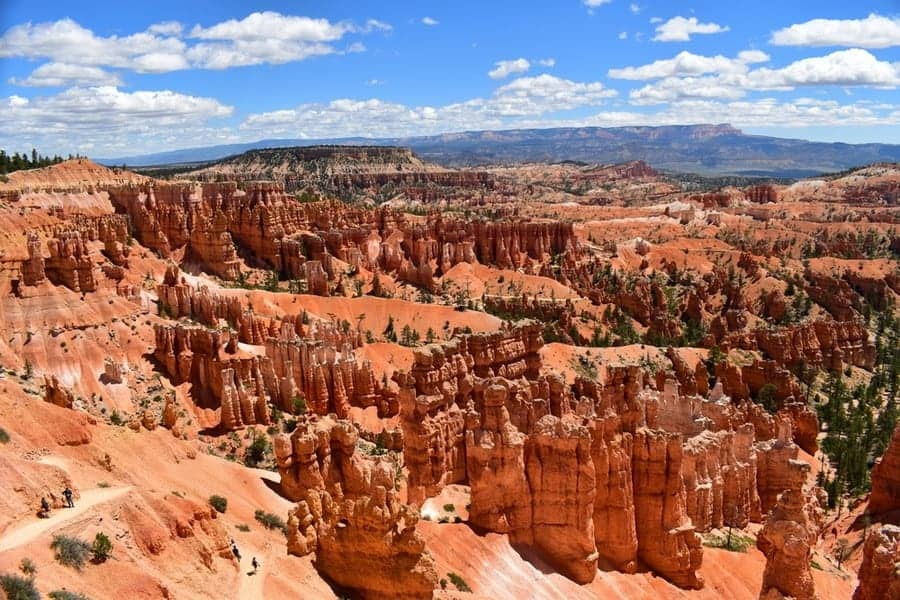
The Navajo Loop Trail is one of the most popular and visually striking hikes in Bryce Canyon National Park, Utah. This trail offers an introduction to the park’s famous hoodoos—tall, thin spires of rock that have been shaped by erosion. The Navajo Loop is relatively short, spanning just 1.3 miles (2.1 kilometers). The Navajo Loop can be connected with the Queen’s Garden Trail for those seeking a longer hike, which extends the experience and provides different perspectives on the hoodoos. Due to its high elevation, over 8,000 feet (2,438 meters), and the strenuous nature of the climb out of the amphitheater, hikers are advised to prepare adequately.
9. Kalalau Trail, Hawaii
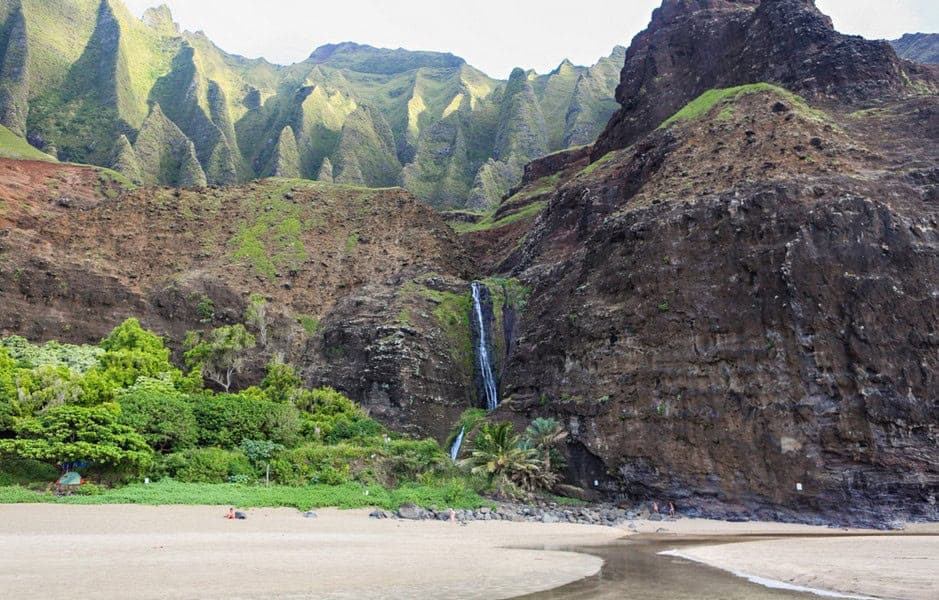
The Kalalau Trail on Kauai’s Na Pali Coast is a 22-mile (35 kilometers) round trip that offers some of the most spectacular coastal scenery on the planet. It features steep trails, lush forests, and dramatic cliffs overlooking the Pacific Ocean. The trail ends at the beautiful and remote Kalalau Beach, which features a soft sandy beach and a waterfall. The recommended duration for this hike, plus a day at the beach, is three days.
10. Wonderland Trail, Washington
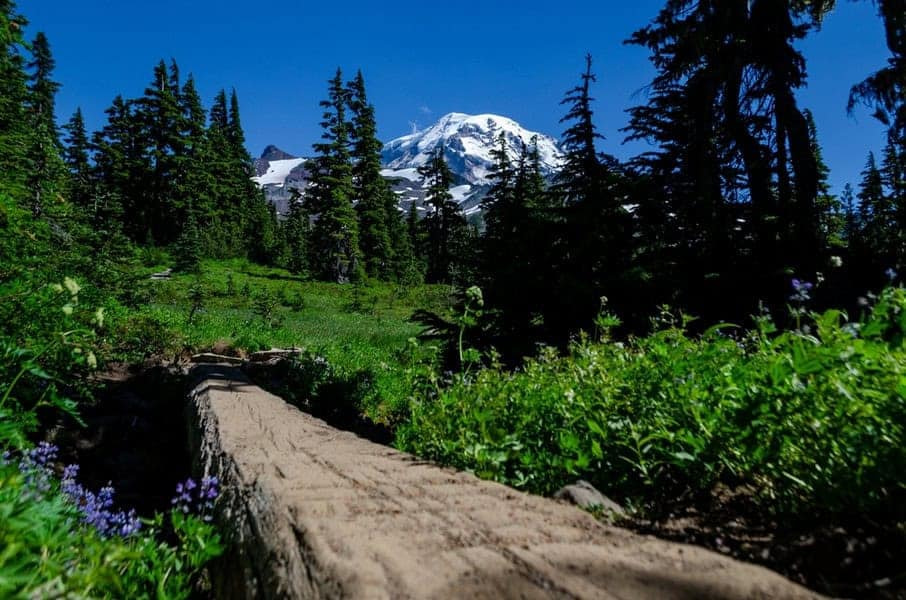
Circling Mount Rainier, the 93-mile (150 kilometers) Wonderland Trail provides a comprehensive exploration of this iconic mountain. Hikers will encounter glaciers, waterfalls, and meadows, making it one of the most diverse trails in the Pacific Northwest. The demanding terrain and changing weather conditions make this trail suitable for well-prepared and experienced hikers. Most hikers choose to tackle this trail in 6-8 days, but it can be completed much faster.
11. Grand Canyon Rim to Rim, Arizona
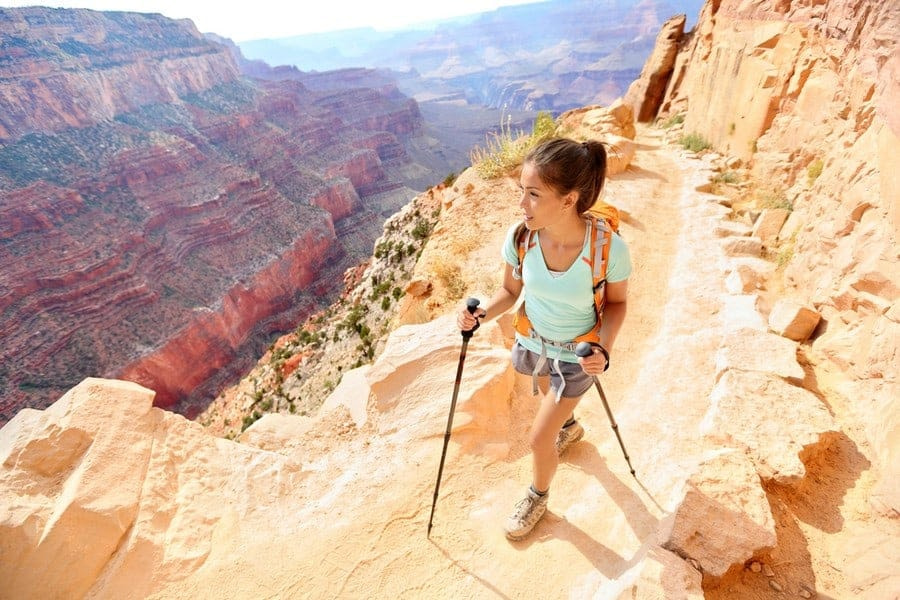
The Grand Canyon Rim to Rim hike offers an in-depth exploration of one of the world’s most awe-inspiring natural wonders. This demanding route is approximately 24 miles (39 kilometers), traversing the canyon from the North Rim to the South Rim, or vice versa. The rim to rim hike involves significant elevation changes, descending into the heart of the canyon and climbing back up to the opposite rim. This journey offers views of the canyon’s rock layers, which tell the geological history of the past two billion years. The trek can be completed in a single, long day, but many prefer to split it over 2-3 days.
12. The Long Trail, Vermont
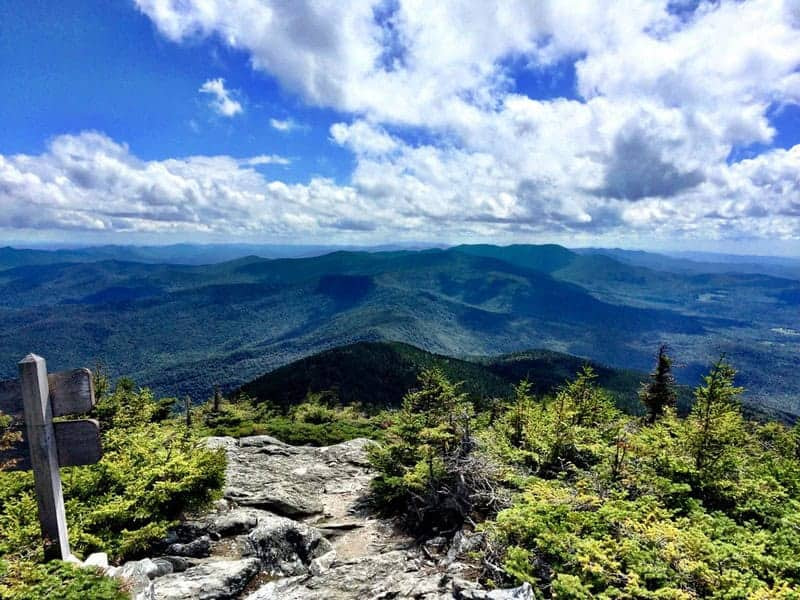
The Long Trail in Vermont holds the distinction of being the oldest long-distance trail in the United States. Established in 1910, it runs the length of Vermont, spanning approximately 272 miles (438 kilometers) from the Massachusetts border to the Canadian border. This trail follows the main ridge of the Green Mountains, presenting hikers with a route that is as beautiful as it is challenging. It traverses Vermont’s highest peaks, including Mount Mansfield and Camel’s Hump. Hikers generally tackle the Long Trail in 20-30 days.
13. Sliding Sands Trail, Hawaii
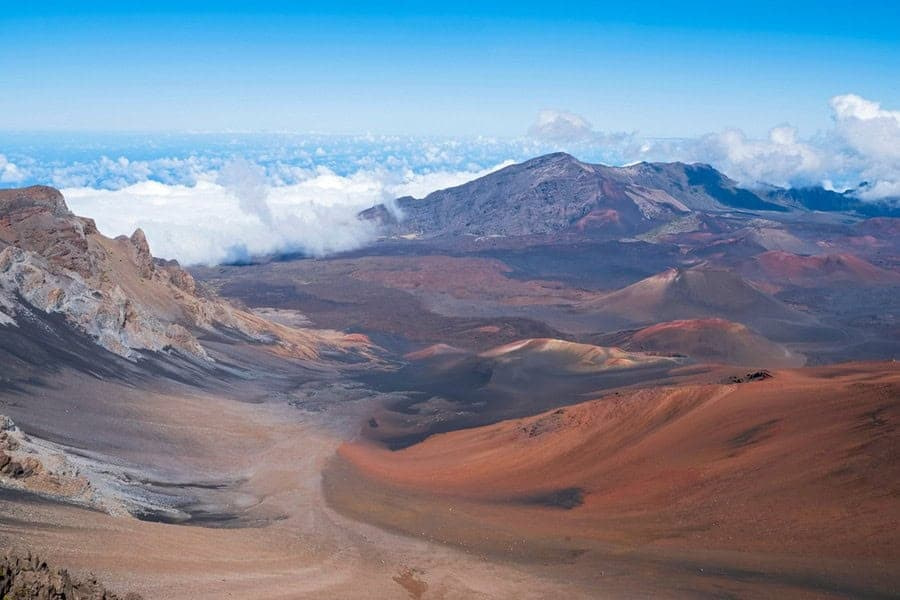
The Sliding Sands Trail, located within Haleakalā National Park on the island of Maui, showcases the surreal landscape of Haleakalā Crater. Spanning approximately 11 miles (17.7 kilometers) round trip, the Sliding Sands Trail starts at the rim of the crater and descends into the crater floor, revealing a stark, moon-like terrain punctuated by cinder cones in varying hues of red, purple, and yellow. This hike is a physical challenge due to the elevation changes and the high altitude—over 9,800 feet (2,987 meters) at the trailhead.
14. The Florida Trail, Florida

The Florida Trail spans approximately 1,300 miles (2,092 kilometers) from the Everglades National Park in the south to Fort Pickens at the Gulf Islands National Seashore in the Panhandle. It provides a unique cross-section of Florida’s diverse natural environments. tems. Hikers can experience the wetlands, pine flatwoods, hardwood hammocks, and palm fronds that define Florida’s landscape. The trail also features a rich array of wildlife, including alligators, panthers, and a plethora of bird species, making it a wildlife enthusiast’s paradise. It takes 2-3 months to hike the entire trail.
15. The Narrows, Utah
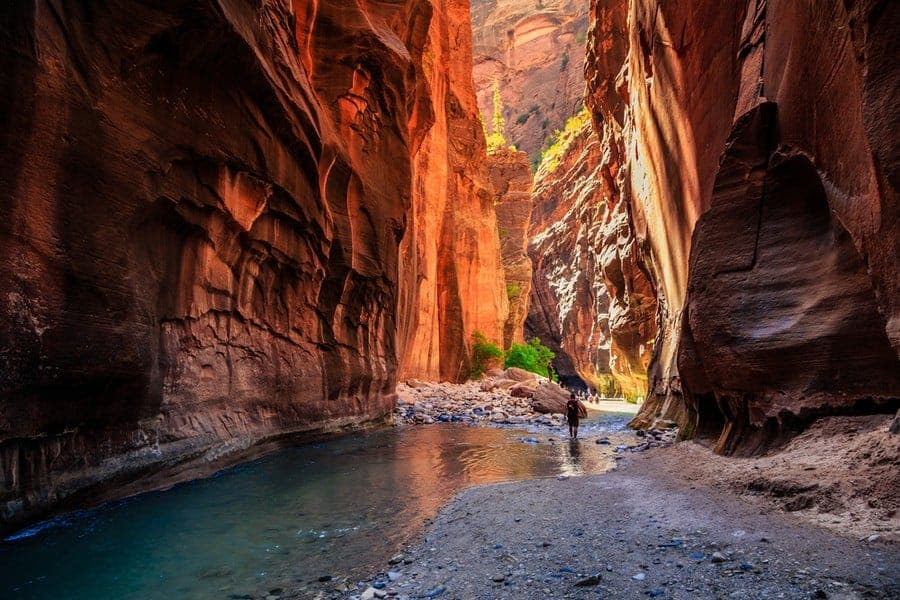
The Narrows is one of Zion National Park’s most distinguished hikes. This experience through one of the narrowest sections of Zion Canyon is not your typical trail; it is largely located in the Virgin River, requiring hikers to wade and sometimes swim through the river’s waters. The hike can vary in length but the most popular route is a 16-mile (25.7 kilometers) one-way trip that is often tackled as a day hike or an overnight adventure. The beauty of The Narrows lies in its towering canyon walls, some of which reach up to 1,000 feet (304 meters) high and are only 20 to 30 feet (6 to 9 meters) apart.
16. West Maroon Pass, Colorado
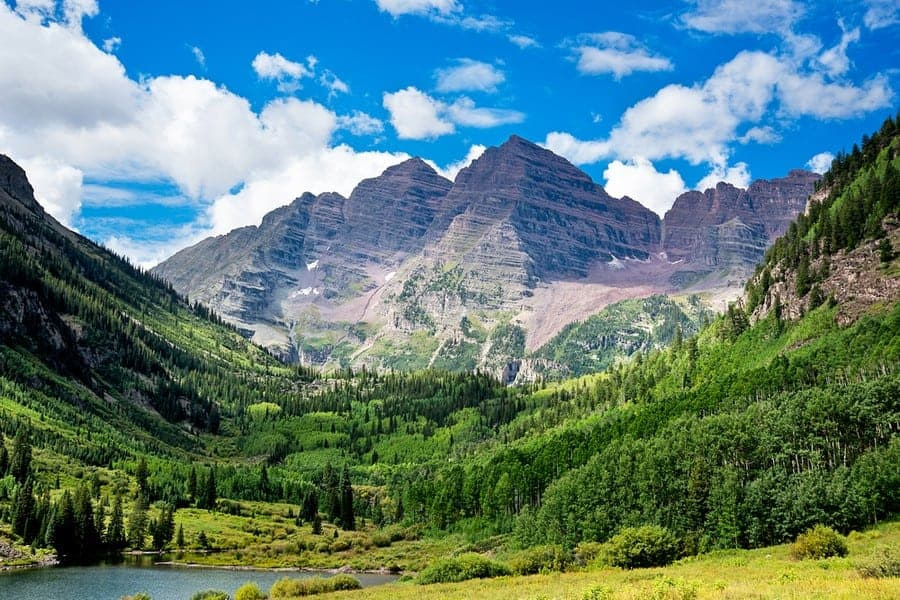
West Maroon Pass is a famous hiking destination located in the Elk Mountains between Aspen and Crested Butte, Colorado. This pass is celebrated for its beautiful alpine scenery and vibrant wildflower displays. The trail connecting the towns via the pass covers about 11 miles (17.7 kilometers) through some of Colorado’s most picturesque landscapes and reaches an elevation of 12,500 feet (3,810 meters). The path provides panoramic views of the Maroon Bells, some of the most photographed peaks in North America.
17. Mount Whitney Trail, California
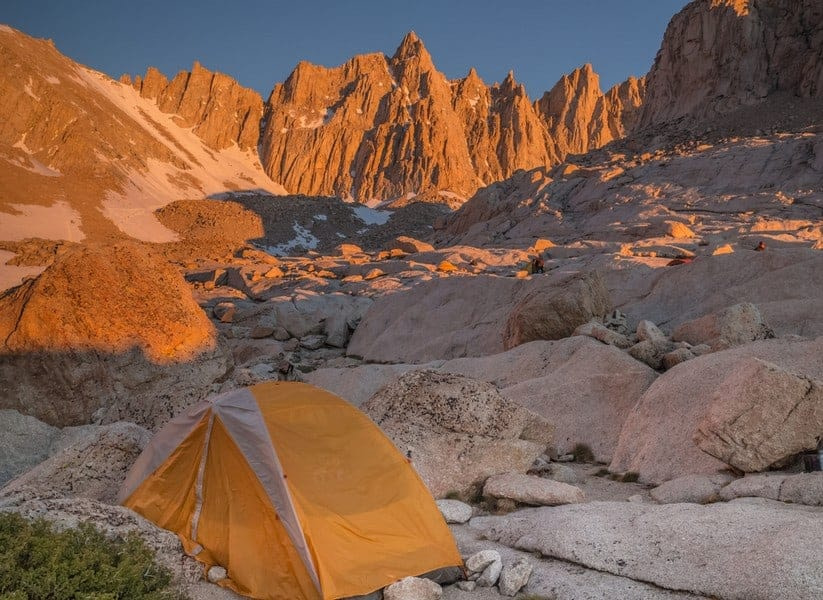
The Mount Whitney Trail reaches the highest peak in the contiguous United States at 14,505 feet (4,421 meters). This 22-mile (35 kilometers) round trip is demanding, characterized by steep climbs and potentially rapid altitude gain, which requires careful pacing and acclimatization. The trail provides exceptional views of the Sierra Nevada and is particularly popular among those looking to test their high-altitude hiking skills. It can be done as a long dayhike or split into a 2-3 day backpacking trip.
18. Highline Trail, Montana
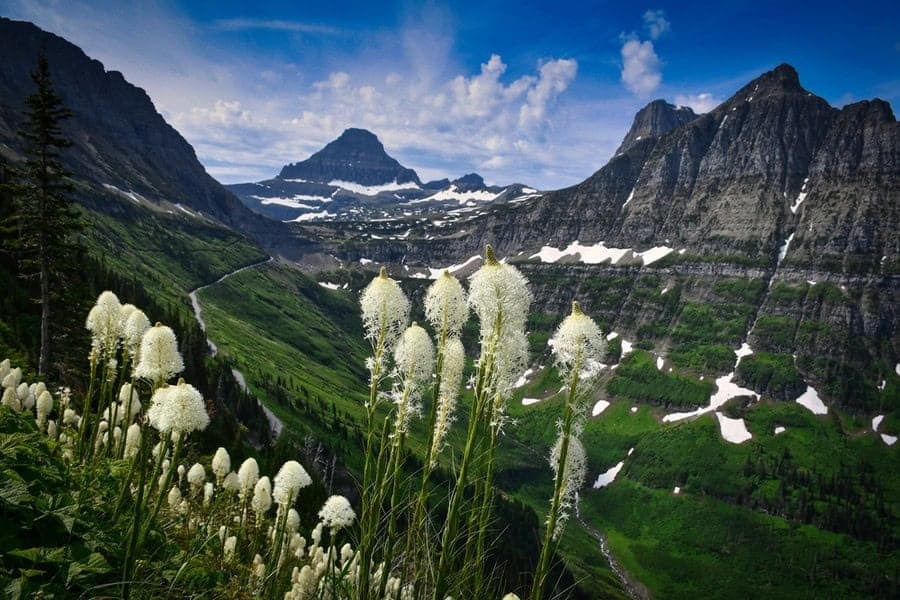
The Highline Trail is one of the most celebrated hikes in Glacier National Park. Stretching approximately 11.8 miles (19 kilometers) from Logan Pass to Granite Park Chalet, and further to The Loop if extended, this trail offers some of the most breathtaking scenery in the park. The trail runs along the Continental Divide, providing hikers with a relatively level path that belies the dramatic drop-offs just beside the trail. Hikers can view vast expanses of glaciated landscapes, dense alpine forests, and wildflower meadows.
19. Angels Landing, Utah
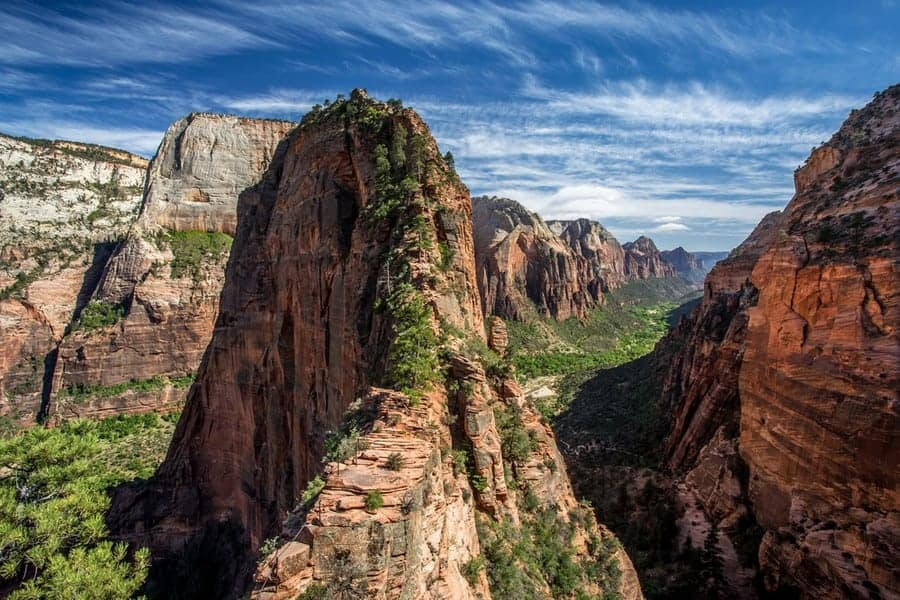
Angels Landing in Zion National Park is one of the most famous and exhilarating hikes in the USA. This short, 5-mile (8 kilometers) round-trip dayhike takes hikers to a narrow rock fin, which stands 1,488 feet (453 meters) above the canyon floor. The trail to Angels Landing is well-maintained but strenuous, involving steep inclines and a series of switchbacks known as Walter’s Wiggles—a set of 21 tight turns carved into the solid rock. The final segment of the hike requires hikers to navigate a narrow ridge with sheer drop-offs on either side. Chains and railings are bolted into the rock to aid hikers along this precarious section.
20. Superior Hiking Trail, Minnesota
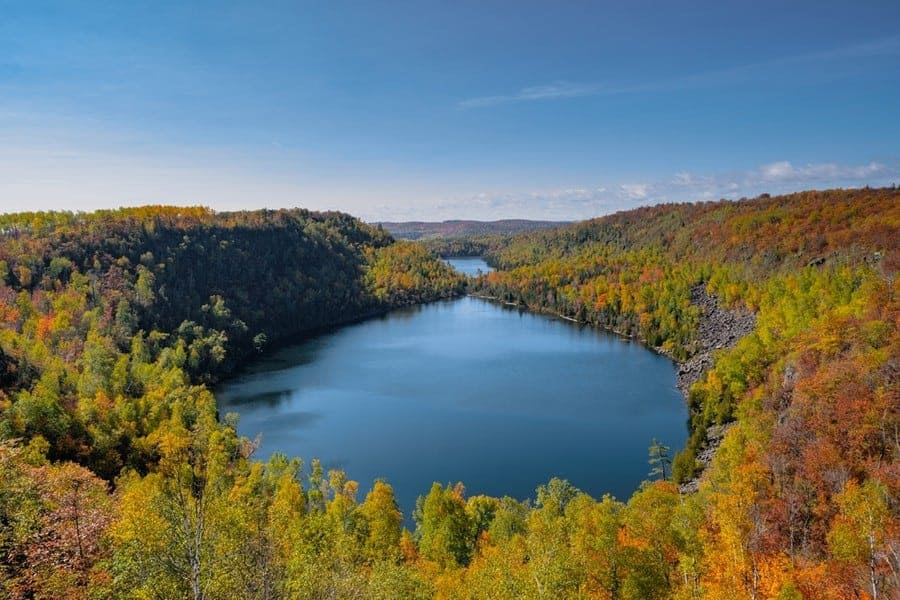
The Superior Hiking Trail, affectionately known as the “SHT,” is a prominent feature in Minnesota, offering over 310 miles (499 kilometers) of scenic pathways along the North Shore of Lake Superior. This trail stretches from the border with Wisconsin at the southern end near Duluth, to the Canadian border. Renowned for its accessibility and beauty, the trail traverses a landscape of dense forests, rugged cliffs, and waterfalls, providing hikers with continuous views of Lake Superior. Most hikers take 4-6 weeks to complete the SHT.
21. Chilkoot Trail, Alaska
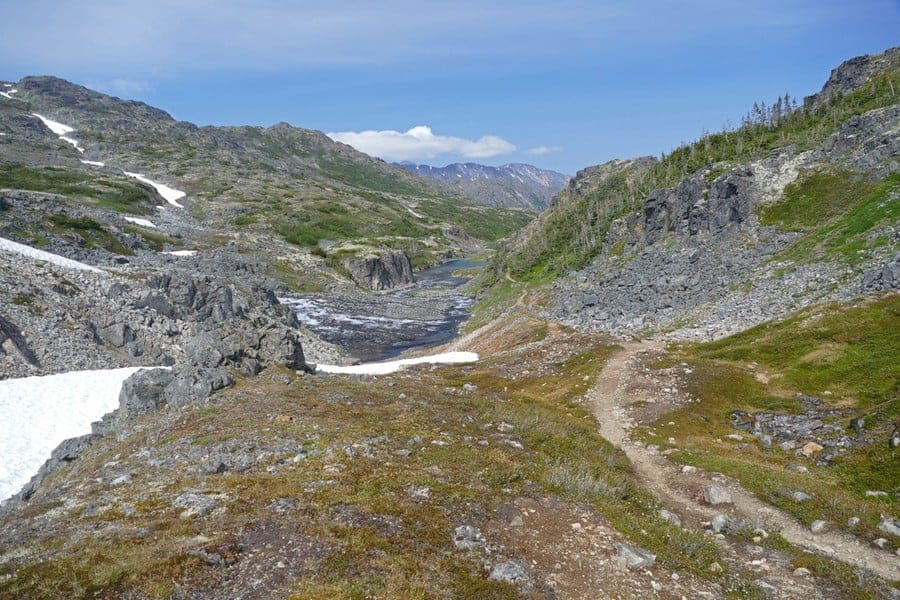
The Chilkoot Trail is a historic trail that is approximately 33 miles (53 kilometers) long, crossing from Alaska into British Columbia, Canada. This path is famously known as the “meanest 33 miles in history” due to its role during the Klondike Gold Rush in the late 1890s. Today, it serves as a bridge to the past, allowing hikers to trace the steps of prospectors who navigated this route on their way to the gold fields. The trail’s challenging terrain includes steep climbs and rugged paths, notably over the Chilkoot Pass, which stands as the highest point on the trail at 3,759 feet (1,146 meters). The average trip length is between 3-5 nights.
22. Lost Coast Trail, California
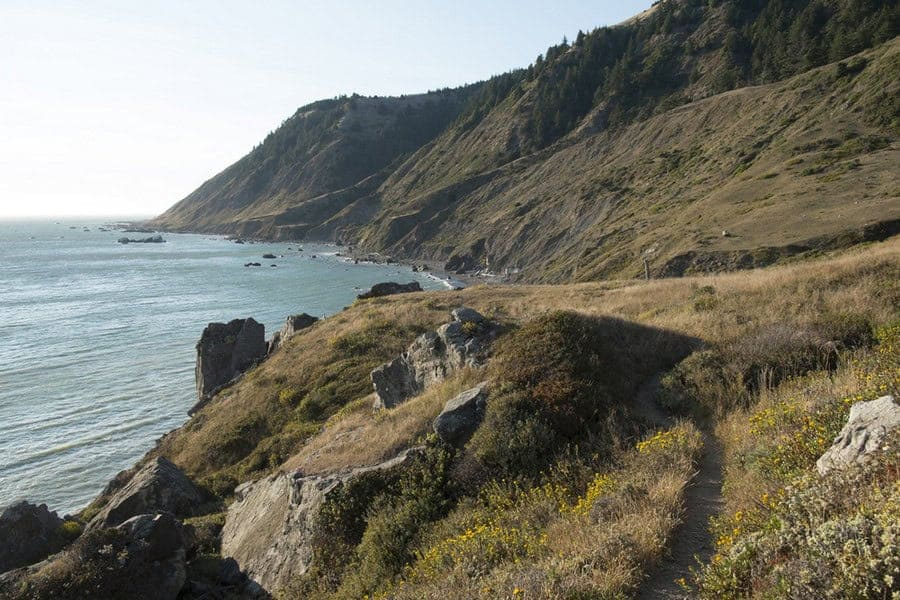
The Lost Coast Trail, located in Northern California, extends along one of the few stretches of the California coastline that remains undeveloped. This remote trail spans approximately 25 miles (40 kilometers) and takes 2-4 days to hike. Navigating the route involves trekking along sandy beaches, rocky shores, and coastal bluffs, with the Pacific Ocean providing a constant backdrop. The trail’s isolation is due to the steepness and instability of the coastal mountains of the King Range, which have historically defied attempts at major road construction, preserving the area’s wild character. Hikers on the Lost Coast Trail can expect to encounter a variety of wildlife, including seals, sea lions, and potentially migrating whales.
23. Franconia Ridge Loop Trail, New Hampshire
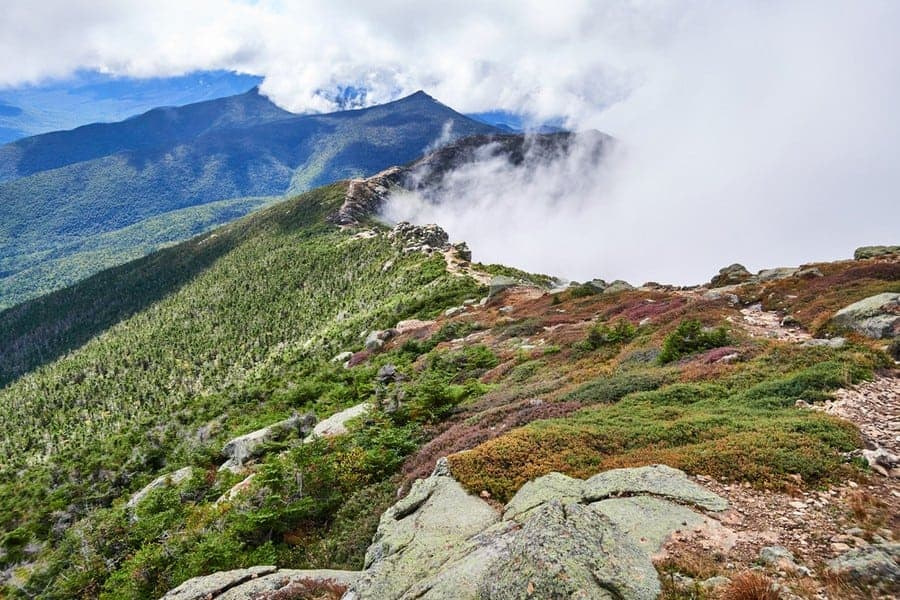
The Franconia Ridge Loop Trail, located in New Hampshire’s White Mountains, is one of the most famous day hikes in the Eastern United States. This loop covers approximately 8.9 miles (14.3 kilometers) and takes hikers across the stunning Franconia Ridge, part of the Appalachian Trail. The trail includes ascents of Mount Lafayette, Mount Lincoln, and Little Haystack, making it a favorite among peak-baggers.
24. Havasupai Falls Hike, Arizona
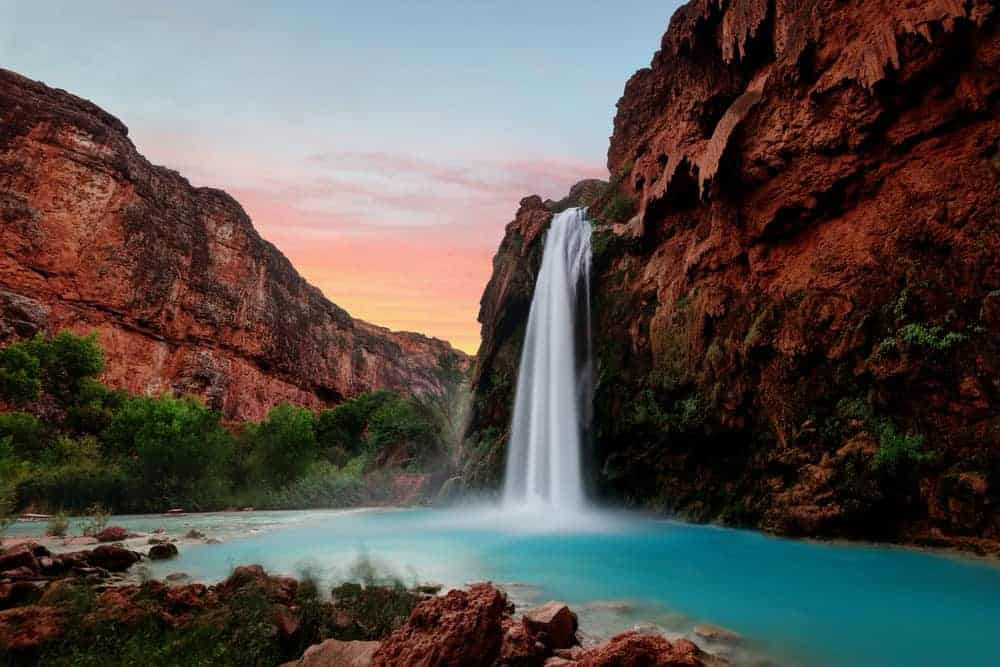
The Havasupai Falls Hike is an extraordinary trek nestled in the heart of the Grand Canyon. The main destination, Havasu Falls, is celebrated for its vivid turquoise waters and 100-foot (30 meters) drop. The journey begins at the Hualapai Hilltop, within the Havasupai Indian Reservation, which is accessible only by foot, horseback, or helicopter. The hike down to the campgrounds covers approximately 10 miles (16 kilometers) and descends over 2,000 feet (610 meters) into the canyon. Once at the base, hikers can explore several other waterfalls in the area, including Mooney Falls and Beaver Falls, each offering unique vistas and opportunities for swimming. It is required to stay 3 nights per reservation.
25. Ozark Highlands Trail, Arkansas
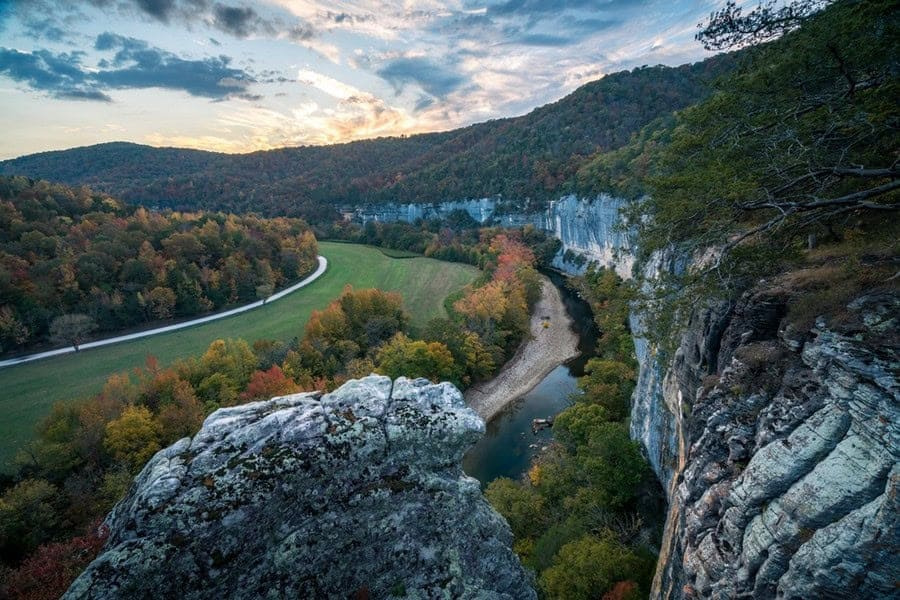
The Ozark Highlands Trail is one of the most scenic trails in the United States, stretching over 218 miles (351 kilometers) through the Ozark Mountains. Starting from Lake Fort Smith State Park and extending eastward to the Buffalo National River, the Ozark Highlands Trail traverses some of the most picturesque landscapes in the region. This trail is noted for its rugged terrain, scenic beauty, and water features, including waterfalls and streams. Hiking here is spectacular in the spring when wildflowers bloom and in the autumn when the foliage transforms into a vibrant display of colors. It takes 10-14 days for most people to complete this hike.



















































